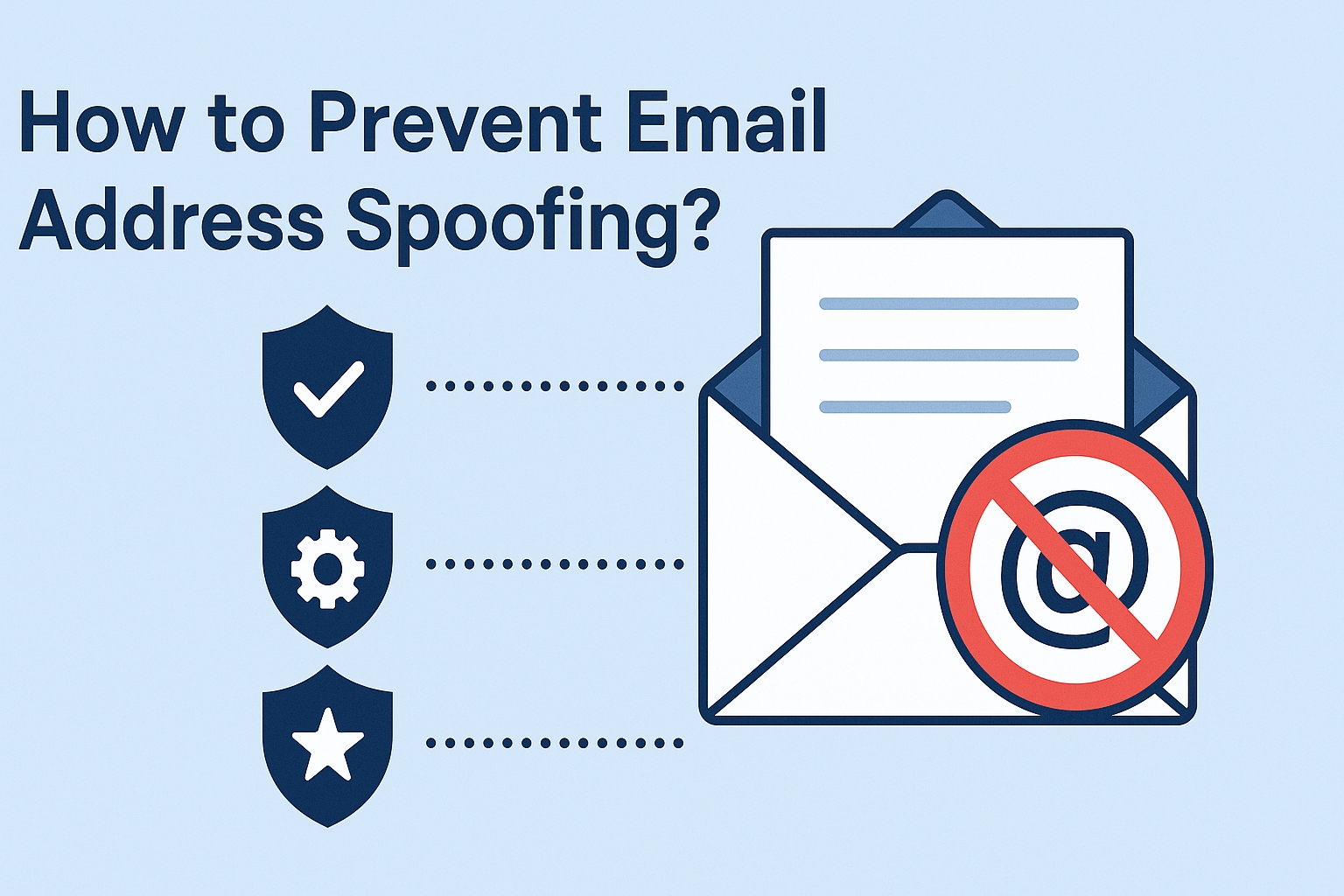
Overview: Spoofing an email address is a cyber threat where the attackers forge the “From” field in an email. So that a person could see it as coming from somebody with whom they would normally deal. Usually, the aim is for the recipient to fall prey to giving away sensitive information, malware download, or trusting fraudulent contents. Since the protocols that operate behind emails do not verify the identities of senders by default. Then, it becomes hard to caught in case of email spoofing.
Therefore, this becomes a bigger concern that needs to be prevented by all levels in society. This article will discuss the major reasons for email spoofing and discuss different ways of manual preventions enhancing your overall email security posture.
Why Does Email Spoofing Happen?
Cyber attackers use email spoofing for a variety of illegal purposes. These are generally done for this fellow reasons:
Share Personal Data: Users usually tend to disclose either credentials or financial information in unknown sites.
Spreading Malware: Dispatching of infected attachments or carrying malicious links.
Business Email Compromise (BEC): Impersonate somebody, an executive or vendor for a fraudulent transaction.
Reputation Attacks: Spoof a trusted sender to damage a legitimate sender's credibility.
Bypassing Spam filters: Emails originating from legitimate domains can go through the spam filter to the inbox.
Manual Methods to Prevent Email Address Spoofing
The following are manual ways to keep your email from being spoofed:
1. Set Up SPF (Sender Policy Framework) Records
SPF records specify IP addresses authorized to send emails on behalf of your domain.
Add a TXT record in your DNS settings.
Include in this record all IPs and mail servers authorized to send emails using your domain.
For Example:
v=spf1 ip4:192.168.0.1 include:_spf.google.com ~all
2. Utilise DKIM (Domain Keys Identified Mail)
DKIM (Domain-based Message Authentication, Reporting & Conformance) attaches a digital signature to your email headers that objectively confirms if it's actually coming from you.
Generate a DKIM key pair.
Add the public key to the DNS records of your domain.
The private key, which will be used by your email server to sign leaving messages.
3. Set up DMARC (Domain-based Message Authentication, Reporting & Conformance)
DMARC calls on SPF and DKIM to direct mail servers on how to treat spoofed emails.
Create a DMARC TXT record in DNS
Set it to hold or refuse emails that don't pass.
Example:
v=DMARC1; p=reject; rua=mailto:[email protected]
4. Turn on Sign and Encrypt Email
Sign and encrypt your emails with an S/MIME or PGP compliant message client. This provides another level of validation.
5. Educate Your Team
Human error is a common target of spoofing. Educate users to:
Check email headers.
Avoid clicking unknown links.
Confirm the identities of senders & particularly in financial transactions.
6. Check the Email Activity Logs And Report
Check the email logs and DMARC reports on a regular basis for any unusual activity or unauthorized sender.
7. Protect Your Domain with DNSSEC
They protect against attackers forging DNS records that are used for SPF, DKIM, and DMARC validation.
Use Automated Tool to Protect From Email Address Spoofing
To Protect your email address from spoofing, you can use our SysTools Best Email Address Checker Tool to do quickly & efficiently. As, you can protect various email addresses in one go. Using this tool, you can export multiple email addresses as a CSV format. By, this you can easily protect your email from spoofing and do lots of activity without worrying about your data.
Conclusion
Spoofed emails have remained one of the many cybersecurity threats in the world today that people always face. But they can be easy to overcome if you take the necessary steps to prevent it. When used alongside other tools like SPF, DKIM & DMARC, user awareness & routine monitoring can decrease the risk of spoofed emails harming your brand significantly.
In short, you must take the initiative when it comes to email authentication and security. So, that your communication is always credible and secure at all times.
